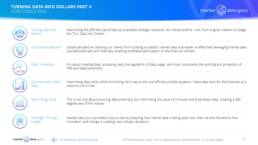
DIGGING UP MARKET DATA TREASURE
In this article we follow the map which leads to market data treasure and the steps to be followed on the way. Unlike old pirate maps with their twists, turns, and hidden hazards, with bad guys trying to get there first, this route is well laid out, with clear skies. If only it was that straightforward, there is always an however, with obstacles in the way and the need to be fully equipped for the journey.
Here we analyse the kit required to reach the market data treasure and how to use it from a high level. In this exploration the journey is every bit as important as the destination, simply because without completing all the necessary steps all the treasure will not be found.
Taking short cuts will bring business failure. The clue to success is getting the basics right.
Data is an asset, not only to the source owner but also for the data consumer, and all players in between. There is no altruism (except in the low consulting fees I charge!), its all about using the data to make money. There is nothing in wrong with this especially when data is seen as a resource, not a mere electronic speck or a line item in the costs column.
WHAT DOES THE MARKET WANT?
If a client, i.e. the data consumer, is going to maximise their own business potential by using the data, it needs to be organised and structured in ways that enables them to do exactly that.
Data is unlike other commodities because of its basic utility to be able to perform multiple different tasks simultaneously, please see the Snickers Effect’, https://lnkd.in/dYbkGxJ8. This places a responsibility upon the data source to deliver the data in formats that are practical. In order to achieve this objective the data source needs to build and then continuously manage its data foundations.
In this article we discuss understanding what these foundations are, and approaches to using them as the basis for operating a successful market data business.
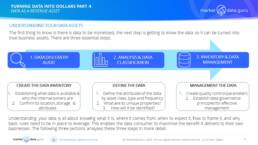
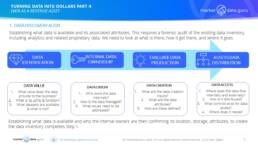
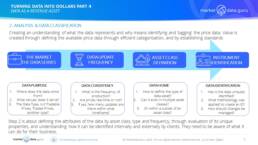
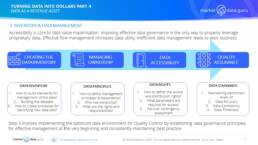
TOOLS FOR THE JOB
The primary tools for the job are people, everything about creating a structure for a data business is reliant upon process. Technology plays a crucial role, there is no data business without it, but data as a business is dynamic, changing rapidly, through demand, development of new information, new usage requirements and regulatory imperatives.
That process must be designed by people, managed by people, and people must be responsible for its efficient operation.
In data the temptation to do things on the cheap does not end well, there is no substitute for experience and expertise.
SUMMARY
To maximise your data as an asset to build a successful commercial enterprise that complements and enhances the core business look to four principles:
1.Create a complete data asset inventory which includes (i) the entire universe of potentially available data, (ii) know the extent of data utilisation, (iii) identifying gaps in the data, and (iv) knowing how, why, and who the data was created by
2.Develop data quality attributes around (i) data accuracy, (ii) data consistency, and (iii) data timeliness
3.Build best practice governance attributes based around (i) internal data ownership & responsibility, (ii) internal data management, and (iii) internal data classifications & taxonomies
4.Craft the data asset framework, by (i) reviewing classifications and definitions to ensuring the right data is accessed from the right place to meet its business purpose, then (ii) establishing the internal environment needed to build a successful market data business
These approaches are both logical and coherent. However, the business needs to constantly maintain the same levels of consistency and quality through oversight, and validation. Building a structure is the first strategy point, the second is maintaining it at peak performance
Keiren Harris 27 July 2022
Please contact info@marketdata.guru for a pdf copy of the article
For information on our consulting services please email knharris@datacompliancellc.com
